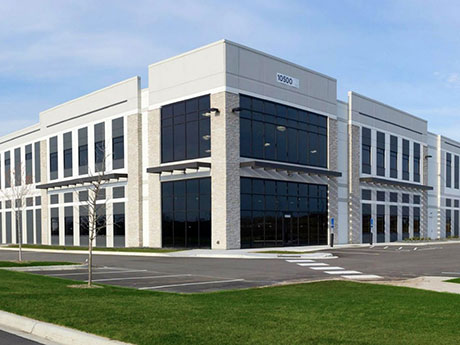By David Berglund, JLL
The Minneapolis-St. Paul industrial real estate market continues to show strength as tenant demand and leasing activity keep vacancies low and absorption steady. In the second quarter of 2023, there were more than 4 million square feet of leasing and 523,641 square feet of net absorption, which pushed vacancy rates down slightly to 3.6 percent.
In addition, roughly 800,000 square feet of speculative development was removed from the market. Currently, there is just 2.7 square foot of available space for every square foot of tenant demand.

Year-to-date absorption was nearly 2 million square feet, led by the Northwest submarket with nearly 1.3 million square feet of that total since January. The Northwest submarket has been leading in absorption in four of the past six quarters.
Asking rents increased to $6.21 per square foot and first-year rents continued to climb to $9.13 per square foot, reflecting an 11.5 percent growth over 2022. With very low vacancy and limited supply coming, we are continuing to see favorable conditions for landlords in the Twin Cites industrial market. New high-water marks for rents will likely continue into 2024.
Investment sales, however, tapered off significantly as the impact of several incremental interest rate hikes by the Federal Reserve beginning in early 2022 took hold. As a result, transactions of all sizes have been challenging due to the lending constraints.
In comparison, at this time last year it was relatively easy to secure good debt from banks and other lenders and it was not uncommon to receive 10 to 15 offers from qualified buyers, five to seven of which would be highly competitive.
Today, it is much more difficult due to pricing constraints and changing spreads. Sales are still getting done; however, every transaction is just a little bit more challenging than it was 12 to 18 months ago. The buyer pool has shrunk with those 10 to 15 offers now being closer to five to seven offers.
The good news is that the “quality” of the buyer pool is still relatively deep, but these buyers are just not as aggressive on pricing and are watching the debt markets closely to determine value.
Pricing for Class A product in the Twin Cities for example has moved close to 200 basis points from where it was 18 months ago. This might be just a moment in time as the market is healthy — it’s not oversupplied, the development market remains conservative and there is robust tenant activity in the market today.
Despite a challenging lending environment, nearly 2.1 million square feet of speculative development broke ground between April and June, indicating faith in the strong tenant demand. Currently, there is more than 8.1 million square feet of speculative development under construction, with some 7 million slated for completion by year’s end.
Industrial completions exceeded 1.3 million square feet so far this year, with build-to-suit projects accounting for more than 1 million square feet of that total.
Looking forward
The main takeaway right now is that we’re entering a new real estate cycle where pricing is beginning to stabilize closer to where most buyers expect the debt markets to land. This should make it easier to get deals done and lead to increased volume activity.
Nearly 10 million square feet of active tenant demand should result in continued strong leasing for the remainder of 2023. The nearly 7 million square feet of speculative product set to deliver this year provides an additional choice for those tenants, but several of those options are larger bulk buildings that cannot accommodate users under 100,000 square feet.
Of the new construction in the pipeline, 67 percent projected for completion this year is speculative (nearly 6.6 million), which is in line with the historic average of 65 percent. Currently, tenant demand outpaces new speculative development in the Northeast, Northwest and Southwest suburban markets.
While it has been much more difficult to provide and place equity, it has not been impossible. Equity providers are finding creative ways to get it done. There is plenty of money on the sidelines waiting for a home and much of that equity is seeking industrial product.
Additional interest rate hikes by the Fed may continue to temper sales, but the Minneapolis-St. Paul market is well positioned to continue to attract investors as a “primary” secondary industrial market in the country.
The buyer/seller price gap is still challenging, but seems to be closing as both sides are becoming more realistic.
David Berglund is a senior managing director with JLL. This article originally appeared in the September 2023 issue of Heartland Real Estate Business magazine.


